-
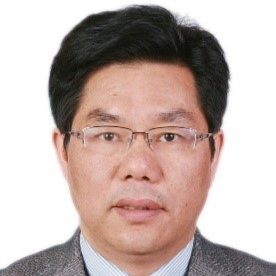
 陈仙辉简 历:陈仙辉,中国科学院院士,中国科学技术大学物理系教授、博士生导师。已经获得国家杰出青年基金资助、教育部长江学者奖励计划特聘教授、国家自然科学一等奖、国际超导材料最高奖Matthias 奖和何梁何利科学与技术进步奖等。主要从事新型非常规超导体和量子功能材料、有序态和量子现象的探索及反常物性和机理研究。
陈仙辉简 历:陈仙辉,中国科学院院士,中国科学技术大学物理系教授、博士生导师。已经获得国家杰出青年基金资助、教育部长江学者奖励计划特聘教授、国家自然科学一等奖、国际超导材料最高奖Matthias 奖和何梁何利科学与技术进步奖等。主要从事新型非常规超导体和量子功能材料、有序态和量子现象的探索及反常物性和机理研究。
题 目:拓扑量子材料热电性能的磁场增强效应
摘 要:能带工程和声子工程对热电性能的提升物理上很清楚,同时也受到很大限制,在传统的半导体热电材料要实现突破和实用化似乎很困难。热电领域亟需新的思想和方法来带动新的变革,要探索新的思路和发现新的机制。在材料体系要突破常规的半导体热电材料,量子材料可能是一个新的方向。这里我们利用强磁场极大的提升了拓扑狄拉克半金属Cd3As2单晶的热电性能,最高的品质因子ZT在450K、9T下达到1.24。ZT的剧烈增加可以归因于磁场对热电势系数的极大提升和对Lorenz数的快速压制,这与Cd3As2中的线性能带色散关系及极高的迁移率有关。将磁场运用到拓扑材料并增强其热电性能,使得热电研究开始进入了量子材料领域。这些结果为寻找新的热电材料体系开拓了新的方向,也为提升热电性能提供了新的思路。另外,我们也发现Cd3As2的狄拉克无能隙特性导致的bipolar效应和狄拉克流体行为阻碍了其ZT在高温的继续增加,这是在拓扑量子材料中寻找优良热电材料可能要解决的问题。
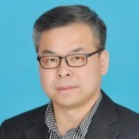
 朱铁军简 历:朱铁军,浙江大学求是特聘教授,国家杰出青年科学基金获得者,国家“万人计划”科技创新领军人才,科技部中青年科技创新领军人才。主要从事热电能量转换材料与器件等方面的研究。曾主持国家自然科学基金、“863”高科技计划、国家重点研发计划课题等科研项目;近年来在Nature Commun., Adv. Mater., Energ. Environm. Sci.等刊物上发表学术论文200余篇,他引7000余次。获授权发明专利19项。在国内外学术会议上做特邀报告40余次。兼任中国材料研究学会热电材料与应用分会副理事长。
朱铁军简 历:朱铁军,浙江大学求是特聘教授,国家杰出青年科学基金获得者,国家“万人计划”科技创新领军人才,科技部中青年科技创新领军人才。主要从事热电能量转换材料与器件等方面的研究。曾主持国家自然科学基金、“863”高科技计划、国家重点研发计划课题等科研项目;近年来在Nature Commun., Adv. Mater., Energ. Environm. Sci.等刊物上发表学术论文200余篇,他引7000余次。获授权发明专利19项。在国内外学术会议上做特邀报告40余次。兼任中国材料研究学会热电材料与应用分会副理事长。
题 目:热电材料中的本征点缺陷
摘 要:热电直接转换技术的核心是改善热电材料的性能。目前提高热电优值的方法主要是通过电子工程或声子工程分别优化材料的电学性能或晶格热导率。本征点缺陷在窄带隙半导体热电材料中扮演重要的角色,其对电声输运的影响近来受到了越来越多的关注。本报告以“本征点缺陷”做为改善热电材料性能的切入点,介绍若干典型热电体系中缺陷调控改善热电性能的范例。在室温碲化铋材料中,控制反位缺陷和类施主效应来有效设计和调节最佳优值出现的温度;利用电平衡原理在Mg2(Si,Sn)中温固溶体中通过高浓度Sb取代实现间隙Mg和Mg空位共存以增加结构无序,显著降低晶格热导率,从而改善热电性能;发现高温ZrNiSn基half-Heusler合金中存在Ni/空位反位无序,而非Zr/Sn反位缺陷,这种原子尺度的无序使电输运过程以合金散射为主导,而非常见的声学声子散射机制;近来我们发现名义19电子的半赫斯勒热电合金,在阳离子空位存在的情况下体系具有更好的稳定性,具有长程序和空位短程序共存的结构特征,但空位有序度可调,对该类材料的物理性能有重要的影响。
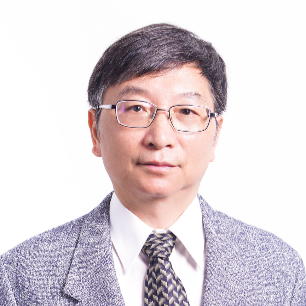
 陈立东简 历:陈立东,中国科学院上海硅酸盐研究所研究员、高性能陶瓷和超微结构国家重点实验室主任。1960年生,1981年毕业于湖南大学,1990年4月获日本东北大学工学博士学位。先后在日本RIKEN公司、日本航空宇宙技术研究所、日本东北大学金属材料研究所(助手、副教授)工作。2001年获中科院“百人计划”资助进入上海硅酸盐研究所工作,2003年获国家杰出青年基金资助,2009年获国家自然科学基金委创新群体科学基金资助。长期从事热电材料的设计合成、热电器件集成与应用技术的研究。发表学术论文300余篇,获中国、美国等授权发明专利50余项,著《热电材料与器件》(2018,科学出版社)。先后获国家自然科学二等奖(2013,排名第一)和国家技术发明二等奖(2014,排名第四)。
陈立东简 历:陈立东,中国科学院上海硅酸盐研究所研究员、高性能陶瓷和超微结构国家重点实验室主任。1960年生,1981年毕业于湖南大学,1990年4月获日本东北大学工学博士学位。先后在日本RIKEN公司、日本航空宇宙技术研究所、日本东北大学金属材料研究所(助手、副教授)工作。2001年获中科院“百人计划”资助进入上海硅酸盐研究所工作,2003年获国家杰出青年基金资助,2009年获国家自然科学基金委创新群体科学基金资助。长期从事热电材料的设计合成、热电器件集成与应用技术的研究。发表学术论文300余篇,获中国、美国等授权发明专利50余项,著《热电材料与器件》(2018,科学出版社)。先后获国家自然科学二等奖(2013,排名第一)和国家技术发明二等奖(2014,排名第四)。
题 目:类液态热电材料:进展与展望
摘 要:Since the concept of liquid-like thermoelectric materials was proposed in 2012, a lot of ionic conductors, such as Cu-based
chalcogenides and Ag-containing compounds, have been reported exhibiting “phonon-liquid electron-crystal” (PLEC) transport
characters and their thermoelectric figure of merits have been continuously renovated up to larger than 2.0. Despite their complex
phase transitions and diverse crystal structures, liquid-like materials in common are featured in having two independent sub-lattices:
one rigid sub-lattice formed by immobile ions and one liquid-like sub-lattice consisting of highly mobile ions. The former provides
the charge-transport network maintaining a decent electrical performance, while the liquid-like ions could not only scatter the
phonons but also eliminate part of transverse vibrational models resulting in intrinsically ultra-low lattice thermal conductivity. As one
of the typical liquid-like thermoelectric material systems, Cu-based chalcogenides Cu2X (X=S, Se, Te) have been widely studied to
enhance their performance through various approaches such as doping, alloying, band engineering, and nanostructuring as well.
Especially, their unique phonon transport receives wide attention and the phonon dynamics has been profoundly studied. Among
the most challenging issues for the liquid-like materials, to prevent performance degradation caused by the migration of Cu ions, has
been taken into investigation through deeply understanding the mechanism of ion migration and structure degradation. A peak
energy conversion efficiency of 9.1% under the temperature difference of 680 K has been demonstrated in a Cu2Se-based prototype
module. Although the Cu-based liquid-like thermoelectric materials really possess advantages in low cost and high zT at high
temperatures and significant achievements have been made on this new category of materials in the past decade, the liquid-like
thermoelectrics are still on a far way to the practical applications. Further challenges in the aspects of both materials and devices,
such as the lack of high-performance n-type Cu/Ag-based liquid like materials, the difficulty in electrode bonding technology, and the
long term stability of device, should be faced squarely nowadays and in the future.

 Wenqing Zhang简 历:Prof. Wenqing Zhang got his BSc/MSc degrees from Xiamen University and Ph.D. degree from Shanghai Institute of Optics and
Wenqing Zhang简 历:Prof. Wenqing Zhang got his BSc/MSc degrees from Xiamen University and Ph.D. degree from Shanghai Institute of Optics and
Fine Mechanics, Chinese Academy of Sciences. After working in FHI in German, and Harvard University, Princeton University, and UCSB
in America, he joined the faculty of Institute of Ceramics, CAS at the special CAS “one-hundred-talent plan” in 2003, and moved to
SUSTech as a full professor in 2017. Prof. Zhang’s research interests cover energy conversion and storage materials including
thermoelectrics, catalysis and Li battery materials, computational materials science, and interface-related phenomena in functional
materials. Dr. Zhang was elected as an APS Fellow due to his pioneering work in thermoelectric material design and computational
materials science in 2014.
题 目:Order-disorder and Materials Genome in Thermoelectrics
摘 要:Searching for high-performance thermoelectric (TE) materials, after a very long-time struggle with the traditional crystalline
semiconductors of narrow gap, seems to be halted in recent years even by considering the quite a few reported zT bubbles in
journals. Even thermodynamics says no up limit on the TE figure of merit zT, reliable performance of practical materials always show
limited zTs, still far away from the requirements of mess industrial applications. We recently proposed that complex materials with
chemical bond hierarchy could be candidates of good thermoelectric materials. Our work showed that this types of materials exhibit
specific part-crystalline part-liquid (PCPL) or part-crystalline part-amorphous (PCPA) structure, containing at least two different types
of sublattices, one relatively rigid crystalline and another one strongly disordered or liquid-like. The order-disorder mixing structure
leads to interesting electrical transport, implying existence of an inherent electron conduction network, and also to extremely low
lattice thermal conductivity albert different from the traditionally recognized minimum lattice thermal conductivity. This talk presents
our work on surveying the general characteristics of transports in order-disorder mixing materials with chemical bond hierarchy.
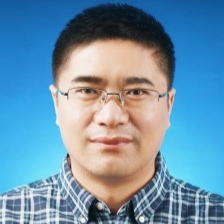
 隋解和简 历:隋解和,男,1979年出生,工学博士,哈尔滨工业大学材料学院教授,博士生导师,材料物理与化学系系主任。2013-2015年在美国休斯顿大学做访问学者。2012年入选教育部新世纪优秀人才支持计划,2016年获国家自然科学基金委优秀青年基金资助,2017年入选教育部青年长江学者计划。中国材料研究学会热电材料及应用分会理事。
隋解和简 历:隋解和,男,1979年出生,工学博士,哈尔滨工业大学材料学院教授,博士生导师,材料物理与化学系系主任。2013-2015年在美国休斯顿大学做访问学者。2012年入选教育部新世纪优秀人才支持计划,2016年获国家自然科学基金委优秀青年基金资助,2017年入选教育部青年长江学者计划。中国材料研究学会热电材料及应用分会理事。
题 目:微结构调控与热电性能优化
摘 要:热电材料是一种热能和电能可相互转换的清洁能源材料,热电优值作为评价热电材料性能优劣的指标,但影响热电优值的热电输运参数彼此关联,相互制约。因此如何实现热电输运参数解耦,协同提高热电性能成为当前研究热点。本报告重点介绍课题组近几年通过调控热电材料微结构,解耦热电输运参数,协同提高热电性能方面的研究成果,主要包括:基于热电材料结构、相图等特征,提出在方钴矿,BiCuSeO等热电材料体系中采用液相压实构建位错阵列,脱溶析出第二相以及热锻构建织构等微结构构筑调控热电输运行为,协同提高热电性能。
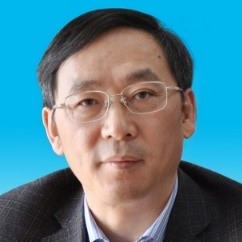
 李敬锋简 历:李敬锋,清华大学材料学院教授,国家杰出青年基金获得者,“长江学者”特聘教授。主要研究热电材料与微器件、无铅铁电压电陶瓷与薄膜、MEMS材料微加工技术。共发表SCI论文440余篇,被引14000余次(H因子63),获国内外发明专利25项,主编《新能源材料及其应用技术》和《新材料概念》。任Journal of Materiomics主编和《硅酸盐学报》副主编。
李敬锋简 历:李敬锋,清华大学材料学院教授,国家杰出青年基金获得者,“长江学者”特聘教授。主要研究热电材料与微器件、无铅铁电压电陶瓷与薄膜、MEMS材料微加工技术。共发表SCI论文440余篇,被引14000余次(H因子63),获国内外发明专利25项,主编《新能源材料及其应用技术》和《新材料概念》。任Journal of Materiomics主编和《硅酸盐学报》副主编。
题 目:纳米复合协同调控电热输运特性
摘 要:高性能热电材料需要具有高赛贝克系数、高电导率和低热导率,但三者却相互关联,其独立调控难以实现,因此,热电材料研究的关键科学问题就是如何实现强关联电热输运特性的协同调控。纳米复合可以有效增强声子散射,从而通过降低热导率来提高热电优值,但如何在降低热导率的同时,实现功率因子的提升是一个难题,关键在于纳米相与基体之间的界面结构调控。本报告将围绕几个纳米复合材料体系介绍相关近期研究进展。
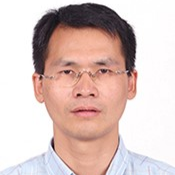
 Yuan-Hua Lin简 历:Professor Yuan-Hua Lin is the Professor Cheung Kong Scholars, and Dean of school of Materials Science & Engineering of
Yuan-Hua Lin简 历:Professor Yuan-Hua Lin is the Professor Cheung Kong Scholars, and Dean of school of Materials Science & Engineering of
Tsinghua University. He received his PhD in the Department of Materials Science & Engineering from Tsinghua University in 2001. He
joined University of Tokyo as a postdoc (2004-2006). He was awarded as Distinguished Scholar of National Natural Science
Foundation in 2010, Young Researcher Award of the Chinese Ceramic Society in 2007. 2nd-class Award of Science and Technology of
Ministry of Education in 2009, etc. Prof. Lin has authored/ co-authored over 200 publications, and his entire publications have been
cited for over 13,100 times, and h index is 62. He also obtained 20 patents and gave about 60 invited talks. Prof. Lin’s research
interests are functional oxide-based ceramics and thin films, including ① High κ ceramic films and nanocomposites for high energy
density capacitors applications; ② High-temperature Oxides thermoelectric materials and devices for energy conversion; ③
Photoluminescence and photo-catalytic oxide nanostructured materials.
题 目:Electric and thermal conductivity behaviours of Layered-Oxides Thermoelectric Ceramics
摘 要:Thermoelectric materials have attracted much more attention due to their applications in waste-heat recovery, power
generation, and solid state cooling, which have many important applications for energy conversions. In comparison with
thermoelectric alloys, oxide semiconductors, which are thermally and chemically stable in air at high temperature, are regarded as the
candidates for high-temperature thermoelectric applications. We prepared layered BiCuSeO, Bi2O2Se and Ca-Co-O-based ceramics
by Spark plasma sintering. Our results indicate that these special layered structure can effective scatter the phonons, resulting in an
obvious reduction of thermal conductivity, and ZT can be enhanced greatly. A high performance thermoelectric oxyselenide BiCuSeO
ceramic with ZT>1.5 at 823 K is obtained. The band gap engineering and nanostructures can effectively tune its electronic structure,
hole concentration and thermal conductivity, resulting in substantially enhanced mobility, power factor and thus ZT value in these
layered oxides.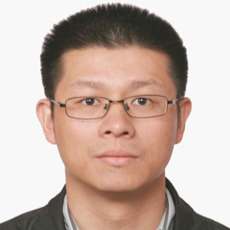
 史 迅简 历:史 迅,男,博士,中国科学院上海硅酸盐研究所研究员,博士生导师。中科院百人计划入选者,国家自然科学基金杰出青年科学基金、优秀青年基金项目获得者,入选万人计划领军人才、科技部中青年科技创新领军人才、上海市“优秀学科带头人”和“浦江人才”。长期从事热电能量转换材料与无机柔性半导体材料的研究。
史 迅简 历:史 迅,男,博士,中国科学院上海硅酸盐研究所研究员,博士生导师。中科院百人计划入选者,国家自然科学基金杰出青年科学基金、优秀青年基金项目获得者,入选万人计划领军人才、科技部中青年科技创新领军人才、上海市“优秀学科带头人”和“浦江人才”。长期从事热电能量转换材料与无机柔性半导体材料的研究。
题 目:类液态材料的热电性能、稳定性与器件研究
摘 要:热电直接转换技术利用半导体材料的Seebeck效应与Peltier效应实现热能和电能之间相互转化,在工业余热和汽车尾气废热发电、太阳能综合利用、热电制冷与特殊电源等领域具有广泛而重要的应用前景。有效提高热电材料性能是目前工业应用的瓶颈和热电材料研究领域亟待解决的难点。现有的典型热电材料大多由重元素或昂贵的稀土金属构成,研究已相当成熟,人们迫切需要发展新的材料体系和物理机制来拓宽热电材料的研究、以及开展新的应用研究来推动其商业应用的进展。类液态热电材料是近年来新发现的一类新型热电材料,具有超低的晶格热导率、超高的热电性能,以及其他一些非常独特的物理性能。本报告将综述类液态热电材料的发展现状,重点介绍影响其独特物理性能的可能机制,最后还将论述类液态材料稳定性的研究。
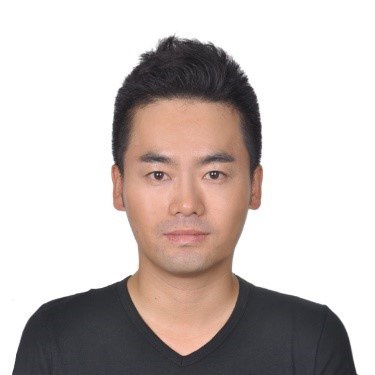
 Li-Dong Zhao简 历:Professor Yuan-Hua Lin is the Professor Cheung Kong Scholars, and Dean of school of Materials Science & Engineering of
Li-Dong Zhao简 历:Professor Yuan-Hua Lin is the Professor Cheung Kong Scholars, and Dean of school of Materials Science & Engineering of
Tsinghua University. He received his PhD in the Department of Materials Science & Engineering from Tsinghua University in 2001. He
joined University of Tokyo as a postdoc (2004-2006). He was awarded as Distinguished Scholar of National Natural Science
Foundation in 2010, Young Researcher Award of the Chinese Ceramic Society in 2007. 2nd-class Award of Science and Technology of
Ministry of Education in 2009, etc. Prof. Lin has authored/ co-authored over 200 publications, and his entire publications have been
cited for over 13,100 times, and h index is 62. He also obtained 20 patents and gave about 60 invited talks. Prof. Lin’s research
interests are functional oxide-based ceramics and thin films, including ① High κ ceramic films and nanocomposites for high energy
density capacitors applications; ② High-temperature Oxides thermoelectric materials and devices for energy conversion; ③
Photoluminescence and photo-catalytic oxide nanostructured materials.
题 目:Electric and thermal conductivity behaviours of Layered-Oxides Thermoelectric Ceramics
摘 要:Thermoelectric materials have attracted much more attention due to their applications in waste-heat recovery, power
generation, and solid state cooling, which have many important applications for energy conversions. In comparison with
thermoelectric alloys, oxide semiconductors, which are thermally and chemically stable in air at high temperature, are regarded as the
candidates for high-temperature thermoelectric applications. We prepared layered BiCuSeO, Bi2O2Se and Ca-Co-O-based ceramics
by Spark plasma sintering. Our results indicate that these special layered structure can effective scatter the phonons, resulting in an
obvious reduction of thermal conductivity, and ZT can be enhanced greatly. A high performance thermoelectric oxyselenide BiCuSeO
ceramic with ZT>1.5 at 823 K is obtained. The band gap engineering and nanostructures can effectively tune its electronic structure,
hole concentration and thermal conductivity, resulting in substantially enhanced mobility, power factor and thus ZT value in these
layered oxides.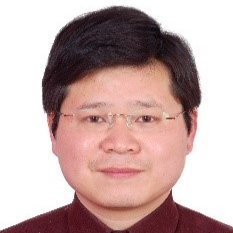
 邓 元简 历:邓 元,北航材料学院教授、中国复合材料学会新型电池与新能源复合材料分会副主任委员,电子元器件关键材料与技术专业委员会资深常务理事,JMST期刊编委。主要从事热电薄膜与微器件加工、生物医学用电子传感材料等研究。主持了包括国家自然科学基金重点项目,科技部863课题、国防科工局民用航天预先研究项目等多项国家级课题。研制的无源无线温度传感器产品获应用。
邓 元简 历:邓 元,北航材料学院教授、中国复合材料学会新型电池与新能源复合材料分会副主任委员,电子元器件关键材料与技术专业委员会资深常务理事,JMST期刊编委。主要从事热电薄膜与微器件加工、生物医学用电子传感材料等研究。主持了包括国家自然科学基金重点项目,科技部863课题、国防科工局民用航天预先研究项目等多项国家级课题。研制的无源无线温度传感器产品获应用。
题 目:基于热电薄膜材料的微发电及传感技术
摘 要:热电薄膜器件在微能源收集及传感上具有重要的应用,如何实现高取向结构热电薄膜材料的制备、热能的高效传输、转换与存储放是重点,而实现高密度阵列热电薄膜与电极的一体化快速制备是关键。报告从热电薄膜器件的结构设计、定向薄膜制备、热超结构电极、电极/热电薄膜界面势垒调控、微器件的激光加工及具体应用开展了系列的研究。通过热仿真优化了器件与系统的结构设计,采用磁控溅射技术实现了柔性与硬性衬底上p/n型碲化铋系定向生长热电薄膜及多功能电极的一体化生长,利用界面工程实现了金/半势垒的调控。研究了材料及界面与环境的作用规律。获得了一系列高性能的高密度阵列热电器件,并开展了基于热电器件的相关应用研究,研发出微发电装置,光传感器,并初步实现了对人体心脏的多功能监测。

 裴艳中简 历:裴艳中,同济大学材料学院教授。主要研究方向为半导体热电材料的电子、声子输运性质,涉及材料设计与合成、缺陷调控、多性能参量同步测试等。于中南大学获得学士学位、中科院上海硅酸盐研究获得博士学位,随后5年在加州理工学院及密西根州立大学从事博士后研究工作。发表100余篇热电研究论文(其中第一/通讯作者论文中IF>10的50余篇),总SCI引用7500次,H因子41,获得国际热电学会Goldsmid及Young Investigator Awards。
裴艳中简 历:裴艳中,同济大学材料学院教授。主要研究方向为半导体热电材料的电子、声子输运性质,涉及材料设计与合成、缺陷调控、多性能参量同步测试等。于中南大学获得学士学位、中科院上海硅酸盐研究获得博士学位,随后5年在加州理工学院及密西根州立大学从事博士后研究工作。发表100余篇热电研究论文(其中第一/通讯作者论文中IF>10的50余篇),总SCI引用7500次,H因子41,获得国际热电学会Goldsmid及Young Investigator Awards。
题 目:热电材料中的声子色散与散射
摘 要:作为能带工程提升材料热电性能的另外一种手段,最小化晶格热导率 (?L) 被证明为同样有效。零维空位与间隙杂质被证明为有效增强声子的散射,此外,这些零维点缺陷的聚集与坍塌可以形成一维位错有望对声子造成额外的散射.近期的研究揭示这些缺陷对声子的散射效果均源于缺陷所引入的原子质量或相互作用力的涨落而导致的声子谱线宽化,而且一维位错是一类非常有效的宽化声子谱的缺陷类型。 此外,德拜线性色散关系是当前最主流的近似模型用于描述块体材料晶格热导率,然而在多达400种的固体材料中统计发现基于该模型所预测的?L理论值比实测值偏高40%。因此,发展与实际情况更为吻合的声子色散关系理论模型是提高材料?L设计精度的关键。基于声子色散关系修正项的提出、声子传播速度调控、弱键复杂晶体结构材料中低声学声子占比得研究均取得了重要进展,众多热电材料的?L 低于玻璃态,进入木材热导率区间.本报告主要涉及我们在热电材料声子色散与散射的理解与调控方面的近期工作,及其对最小化热电材料晶格热导率方面的进展。
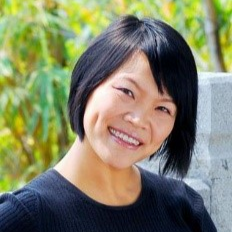
 陈 玲简 历:陈 玲,北京师范大学二级教授。1999年中科院福建物构所获博士学位,2000-2003年Iowa State University博士后。2003年中科院“百人计划”,2012年国家杰青。获政府特贴、国家“突贡中青年专家”、国家万人计划、中科院优秀研究生指导教师、卢嘉锡优秀导师等荣誉。任Crystal Growth and Design杂志Associate editor。主要从事固态功能材料合成、结构调控及性能研究。
陈 玲简 历:陈 玲,北京师范大学二级教授。1999年中科院福建物构所获博士学位,2000-2003年Iowa State University博士后。2003年中科院“百人计划”,2012年国家杰青。获政府特贴、国家“突贡中青年专家”、国家万人计划、中科院优秀研究生指导教师、卢嘉锡优秀导师等荣誉。任Crystal Growth and Design杂志Associate editor。主要从事固态功能材料合成、结构调控及性能研究。
题 目:高效热电材料研发中化学家的作用
摘 要:高效热电化合物的探索合成为新一代热电材料的研发提供了坚实的材料基础,也蕴藏着大量发现热电转换新机制、新现象的机遇,是一个重要的研究方向。化合物的性能由其晶体结构决定。因此,新颖热电化合物的晶体结构设计、结构调控以及构效关系研究具有重要意义。本文介绍了一些我们课题组近期工作进展:新颖Ba5Cu8In2S12化合物的低热导率与其结构中Cu原子有多种配位环境的特殊性相关(0.39–0.28 W m?1 K?1)。单晶结构研究表明TmCuTe2中部分Cu不再表现出类液态流动迁移特征。由于Cs2S8的引入形成全新三元晶体结构CsCu5S3,其相转变温度大幅提高,ZT峰值提升。进一步提升单胞密度,获得结构更为紧密的CsCu5Se3,在1000 K以下,不发生相变、不分解,其本征ZT值在980 K时达到1.03。

 何佳清简 历:何佳清,南方科技大学理学院副院长、物理系主任、教授,国家特聘青年专家入选者、广东省“珠江人才计划”领军人才、深圳市“孔雀团队”带头人、深圳市海外高层次A类人才。1998年获得武汉大学物理学学士学位;2004年获得武汉大学和德国于利希研究中心联合培养的物理学博士学位,师从著名电子显微镜专家Knut Urban教授和王仁卉教授;博士毕业后2004-2012年先后在美国布鲁克海文国家实验室和美国西北大学工作。曾获教育部自然科学二等奖(排名第一)、深圳市自然科学二等奖(排名第一)、深圳市五一劳动奖章等荣誉。主要从事透射电子显微学和功能材料的物理性能与结构关联性等研究以及热电材料研发与器件产业化。目前已在SCI 收录期刊发表论文170余篇,被引用近13000次,H index 51;其中发表包括Science、Nature、PRL、Advanced Materials和JACS等影响因子大于10的论文80多篇。
何佳清简 历:何佳清,南方科技大学理学院副院长、物理系主任、教授,国家特聘青年专家入选者、广东省“珠江人才计划”领军人才、深圳市“孔雀团队”带头人、深圳市海外高层次A类人才。1998年获得武汉大学物理学学士学位;2004年获得武汉大学和德国于利希研究中心联合培养的物理学博士学位,师从著名电子显微镜专家Knut Urban教授和王仁卉教授;博士毕业后2004-2012年先后在美国布鲁克海文国家实验室和美国西北大学工作。曾获教育部自然科学二等奖(排名第一)、深圳市自然科学二等奖(排名第一)、深圳市五一劳动奖章等荣誉。主要从事透射电子显微学和功能材料的物理性能与结构关联性等研究以及热电材料研发与器件产业化。目前已在SCI 收录期刊发表论文170余篇,被引用近13000次,H index 51;其中发表包括Science、Nature、PRL、Advanced Materials和JACS等影响因子大于10的论文80多篇。
题 目:Cs-corrected Electron Microscopy for Thermoelectric Materials
摘 要:The presentation will start with a brief and realistic coverage of the emerging and maturing themes in the context of energy
sources, efficiency, charge storage and distribution. It will illustrate three examples (such as SnSe, GeTe and AgCrSe2) of emerging
excitements in nanostructured materials and systems for thermoelectric materials. It will highlight the role of advanced electron
microscopy in unravelling the hierarchical architecture of the constituents and their intimate interplay in governing key phenomena in
thermoelectric materials.
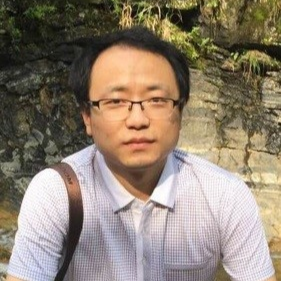
 肖 翀简 历:肖 翀,中国科学技术大学/合肥微尺度物质科学国家研究中心教授,博士生导师。从事固体化学领域研究,通过与理论化学、凝聚态物理、同步辐射和近代物理等多学科领域的交叉,研究低维固体的电/声结构与输运行为的调制规律及其能量转换关联规律,在低维固体的可控制备与结构精确表征的基础上,实现低维无机固体的能量转换效率的提升,为基于低维固体的能量转化性能优化提供了新思路。以第一作者/通讯作者身份发表SCI论文31篇,影响因子10以上的23篇,其中Acc. Chem. Res. 1篇,J. Am. Chem. Soc. 10篇,Chem 1篇,Nature Communications 1篇,Angew. Chem. Int. Ed. 2篇,Adv. Mater. 3篇,ACS Nano 1篇,Adv. Energy Mater. 2篇,Mater. Horiz. 1篇。获国家自然科学基金委优秀青年基金,入选中国科学院青年创新促进会。
肖 翀简 历:肖 翀,中国科学技术大学/合肥微尺度物质科学国家研究中心教授,博士生导师。从事固体化学领域研究,通过与理论化学、凝聚态物理、同步辐射和近代物理等多学科领域的交叉,研究低维固体的电/声结构与输运行为的调制规律及其能量转换关联规律,在低维固体的可控制备与结构精确表征的基础上,实现低维无机固体的能量转换效率的提升,为基于低维固体的能量转化性能优化提供了新思路。以第一作者/通讯作者身份发表SCI论文31篇,影响因子10以上的23篇,其中Acc. Chem. Res. 1篇,J. Am. Chem. Soc. 10篇,Chem 1篇,Nature Communications 1篇,Angew. Chem. Int. Ed. 2篇,Adv. Mater. 3篇,ACS Nano 1篇,Adv. Energy Mater. 2篇,Mater. Horiz. 1篇。获国家自然科学基金委优秀青年基金,入选中国科学院青年创新促进会。
题 目:热电材料电热输运行为优化中的结构化学与物理
摘 要:当今社会,日渐枯竭的传统化石能源带来了前所未有的能源危机和环境污染,热电转化能实现热能与电能之间的相互转化且不排放任何污染物,是同时缓解能源危机和环境污染的一个有效手段。热电转换材料,作为一种无机功能固体,其晶体中的原子周期性排列带来了多样的电子和声子结构,使其因此拥有了丰富的物理、化学性质。如何在晶体结构设计的基础上调节固体材料中的能带结构及微结构来改善电子、声子在晶体中的输运行为,进而实现电学、热学行为的调控以及电热输运行为的协同调控,是长期以来固体化学领域的重要问题,也是获得高效热电材料,进而提高热电转换器件性能的关键途径。然而,在自然界中,完美的晶体几乎是不存在的。也就是说,所制备的固体材料中必然会存在缺陷,其势必会影响到晶体的局域结构以及能带结构,这都对材料的性质起着至关重要的作用。因此,对固体的缺陷/局域结构进行精确表征,并在此基础上研究缺陷/局域结构对其能带结构的影响就必不可少。本报告聚焦在缺陷/局域/能带结构精确表征的基础上,深入理解低维固体热电转换过程中电/声结构及输运行为的基础科学问题,实现低维固体热电转换效率的提升,拓展高效热电转换材料的设计思想。